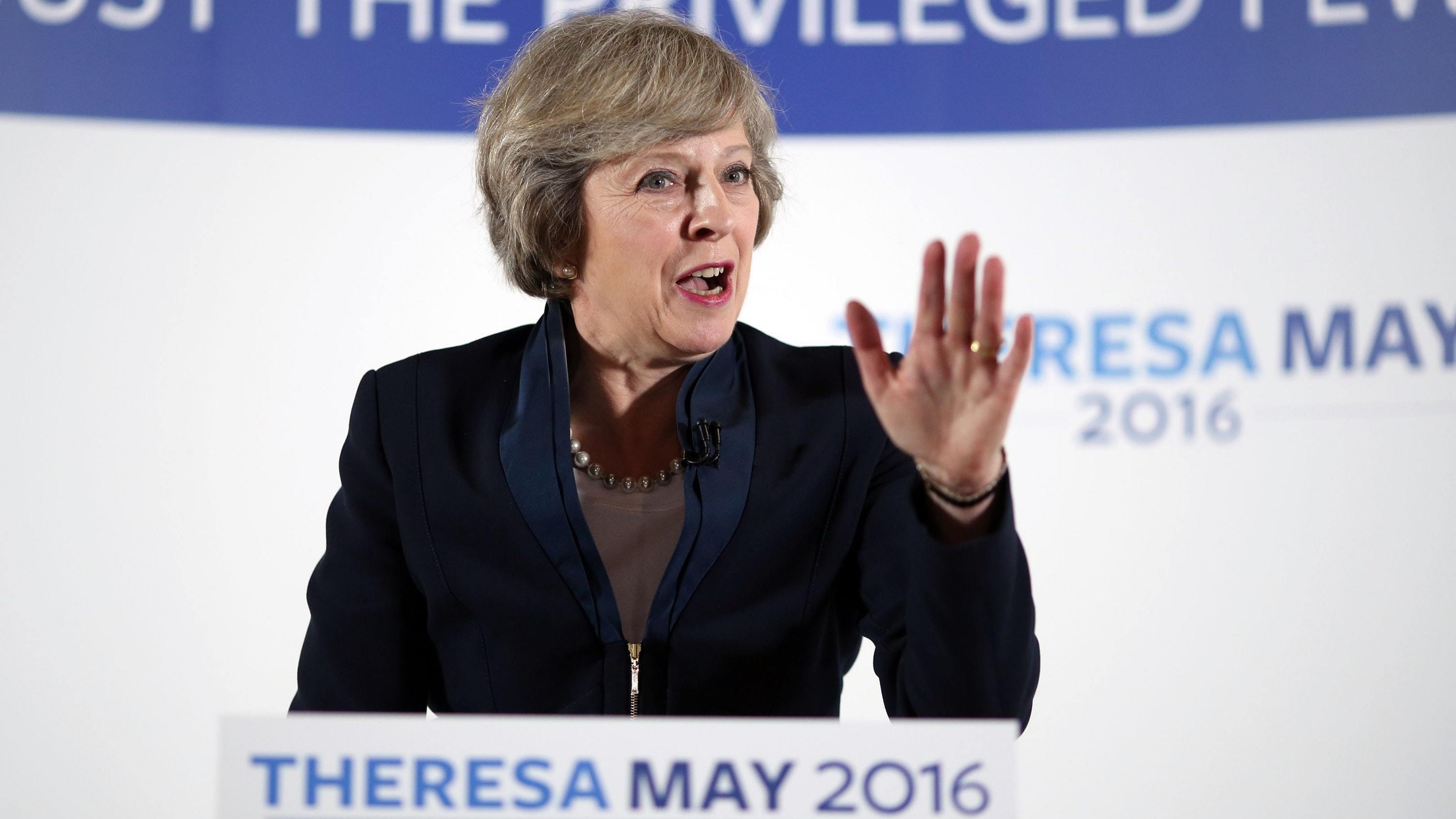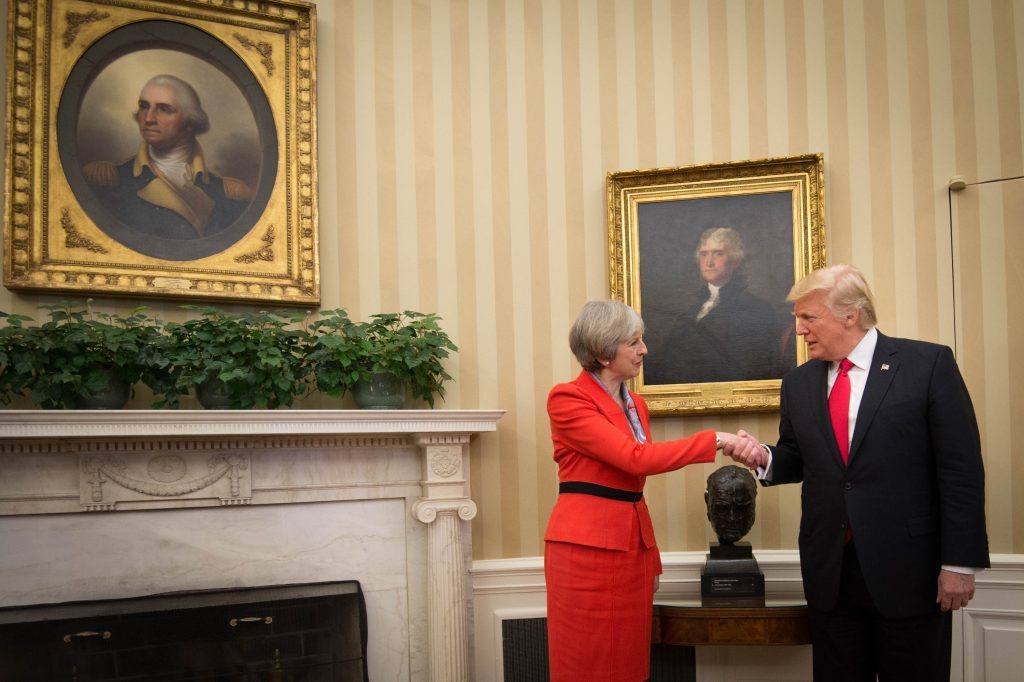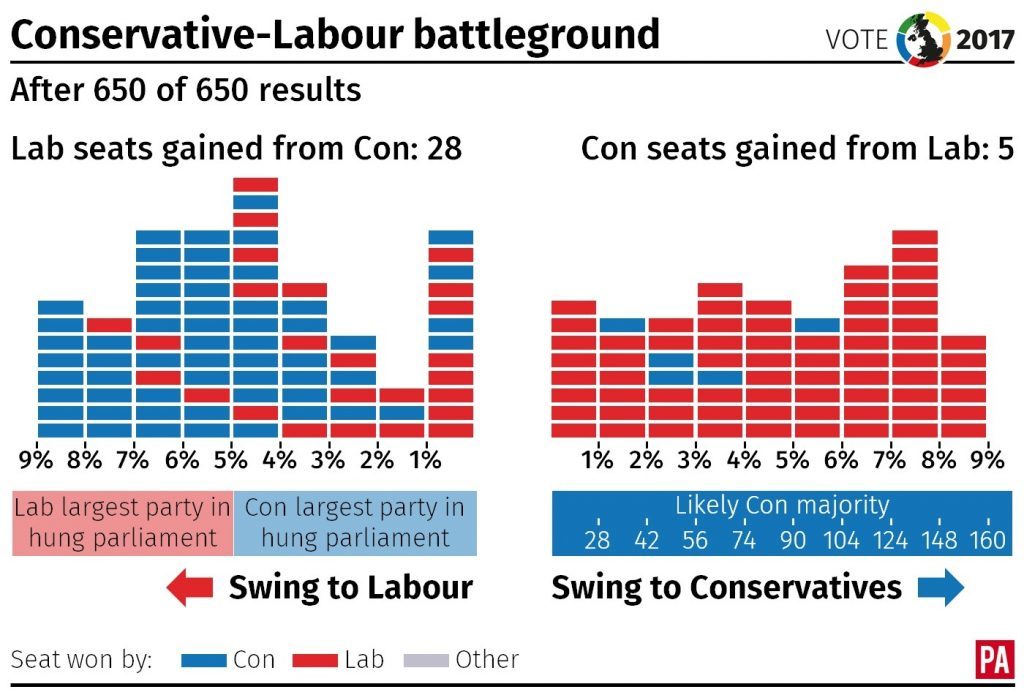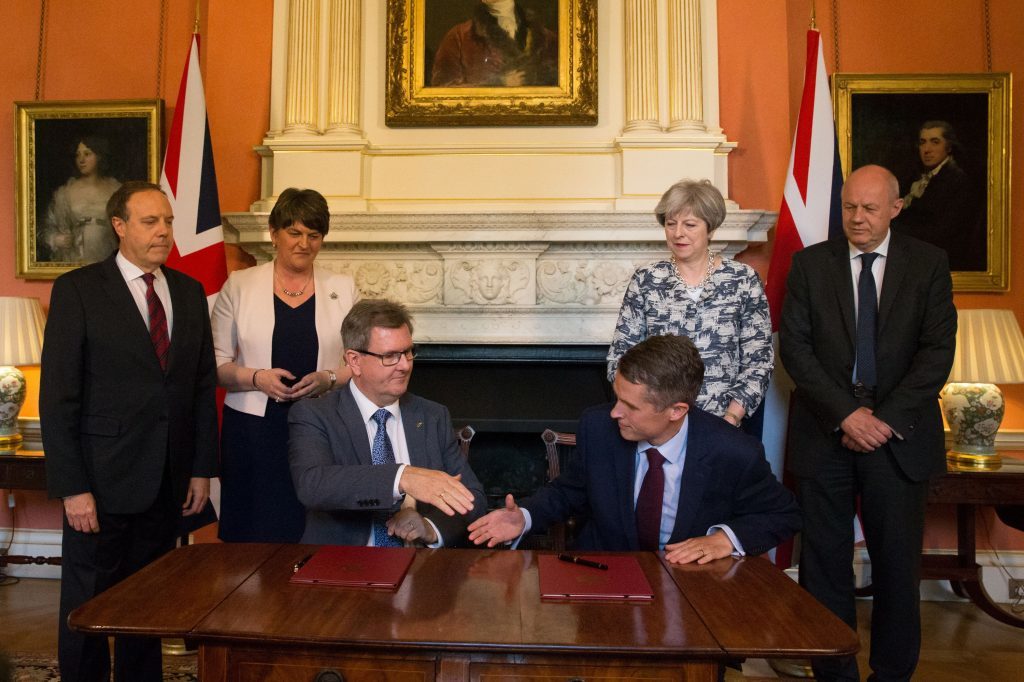
THERESA MAY’S first year as Prime Minister has been fraught with challenges, from Brexit to terror attacks in London and Manchester, and the tragedy of the Grenfell Tower fire just days after the shock election result.
Here is a timeline of her first year in power:
I am honoured and humbled to have been chosen by the Conservative Party to become its leader https://t.co/ISzrNYPvwF pic.twitter.com/Za7CEbTKZl
— Conservatives (@Conservatives) July 12, 2016
July 11 2016 – Theresa May is appointed as Conservative Party leader after challenger Andrea Leadsom withdraws from the leadership race citing lack of support. Mrs Leadsom had faced criticism after giving an interview where she appeared to suggest being a mother gave her an advantage over Mrs May.
July 13 2016 – Mrs May is appointed Prime Minister by the Queen, becoming Britain’s second female premier. She delivers a speech outside Downing Street calling for an end to “burning injustice” faced by many. She also puts the “precious bond” between UK nations at the heart of her speech.
FM @NicolaSturgeon "pleased" PM @theresa_may committed to considering options on EU. https://t.co/sAszIf3LCb pic.twitter.com/xUPK1AMyBz
— First Minister (@ScotGovFM) July 15, 2016
July 15 2016 – One of Mrs May’s first moves is to travel to Scotland to discuss the future of the union with First Minister Nicola Sturgeon. Meeting at Bute House, the First Minister’s official residence in Edinburgh, the leaders discuss the role of the devolved administrations in Brexit talks.
September 9 2016 – The Prime Minister announces plans to end the ban on creating new grammar schools, prompting fierce criticism from opposition MPs.
January 17 2017 – Mrs May outlines her Brexit strategy in a high-profile speech at Lancaster House. She says she will take Britain out of the single market and reduce immigration, although she fails to guarantee the rights of EU citizens in the UK.
January 24 2017 – The Supreme Court rules that Parliament must vote on whether the Government can begin the Brexit process by triggering Article 50 of the Lisbon Treaty.
January 27 2017 – Mrs May is the first political leader to meet US President Donald Trump following his inauguration. She faces criticism for offering President Trump a state visit and for failing to condemn his ban on people from several Muslim countries entering the US. The pair are photographed holding hands outside the White House.
March 22 2017 – Mrs May is rushed from Parliament when armed attacker Khalid Masood mows down pedestrians on Westminster Bridge, killing four people, and storms into the Palace of Westminster. The terrorist kills Pc Keith Palmer before being shot by armed police.
March 29 2017 – MPs vote in favour of triggering Article 50, allowing the Prime Minister to fire the starting gun on Brexit talks.
We need an election now to secure the strong, stable leadership the country needs to see us through Brexit & beyond. https://t.co/8jhvoAcLuR
— Theresa May (@theresa_may) April 18, 2017
April 19 2017 – MPs vote to give the Prime Minister the majority she needs to call a general election.
May 3 2017 – Parliament is dissolved ahead of the election.
We all – every single one of us – stand with the people of Manchester at this terrible time. pic.twitter.com/vMTwaBbncl
— Theresa May (@theresa_may) May 23, 2017
May 22 2017 – Suicide bomber Salman Abedi kills 22 people when he detonates a bomb at an Ariana Grande concert at the Manchester Arena. Election campaigning is suspended and armed forces are sent to protect key landmarks to allow more police on the streets.
June 3 2017 – Eight people are killed and scores injured in a terror attack on London Bridge. Three attackers wearing fake explosive vests are shot dead by police. Mrs May warns there has been “far too much tolerance of extremism” as she pledges to crack down on terrorism. But opposition parties point to cuts in police numbers under Mrs May’s time as Home Secretary.
June 8 2017 – The general election takes place.
June 9 2017 – Mrs May remains Prime Minister but loses her majority as the election culminates in a hung parliament. The Conservatives seek a deal with the 10 Democratic Unionist Party (DUP) members to give the Tories a working majority. Former chancellor George Osborne calls Mrs May a “dead woman walking”.
June 14 2017 – At least 80 people are killed in a fire at the Grenfell Tower housing block, in west London. Mrs May comes under intense criticism for her response to the tragedy.
It is our job to show we are listening and that we will stand up for the people of Grenfell Tower. My full statement https://t.co/U19do3Ccec
— Theresa May (@theresa_may) June 22, 2017
June 19 2017 – A man drives into pedestrians near Finsbury Park mosque. One man dies at the scene and others are injured.
June 21 2017 – The Queen comes to the Palace of Westminster to deliver the Queen’s Speech, the Government’s programme for the coming parliamentary term. The Conservatives present a stripped-down version of their manifesto, with pledges on issues such as grammar schools and fox hunting left out.
June 26 2017 – A £1 billion deal is signed with the Democratic Unionists to prop up Mrs May’s minority government.
June 29 2017 – MPs vote in favour of the Queen’s Speech. Some 49 Labour MPs rebel against Jeremy Corbyn on an amendment to stay in the single market. The Government also vows to pay for Northern Irish women to have abortions on the NHS in England to prevent a backbench rebellion on the Queen’s Speech vote.

Enjoy the convenience of having The Sunday Post delivered as a digital ePaper straight to your smartphone, tablet or computer.
Subscribe for only £5.49 a month and enjoy all the benefits of the printed paper as a digital replica.
Subscribe

